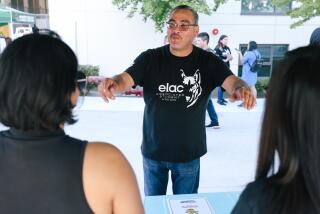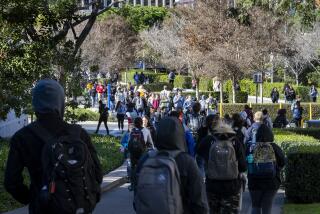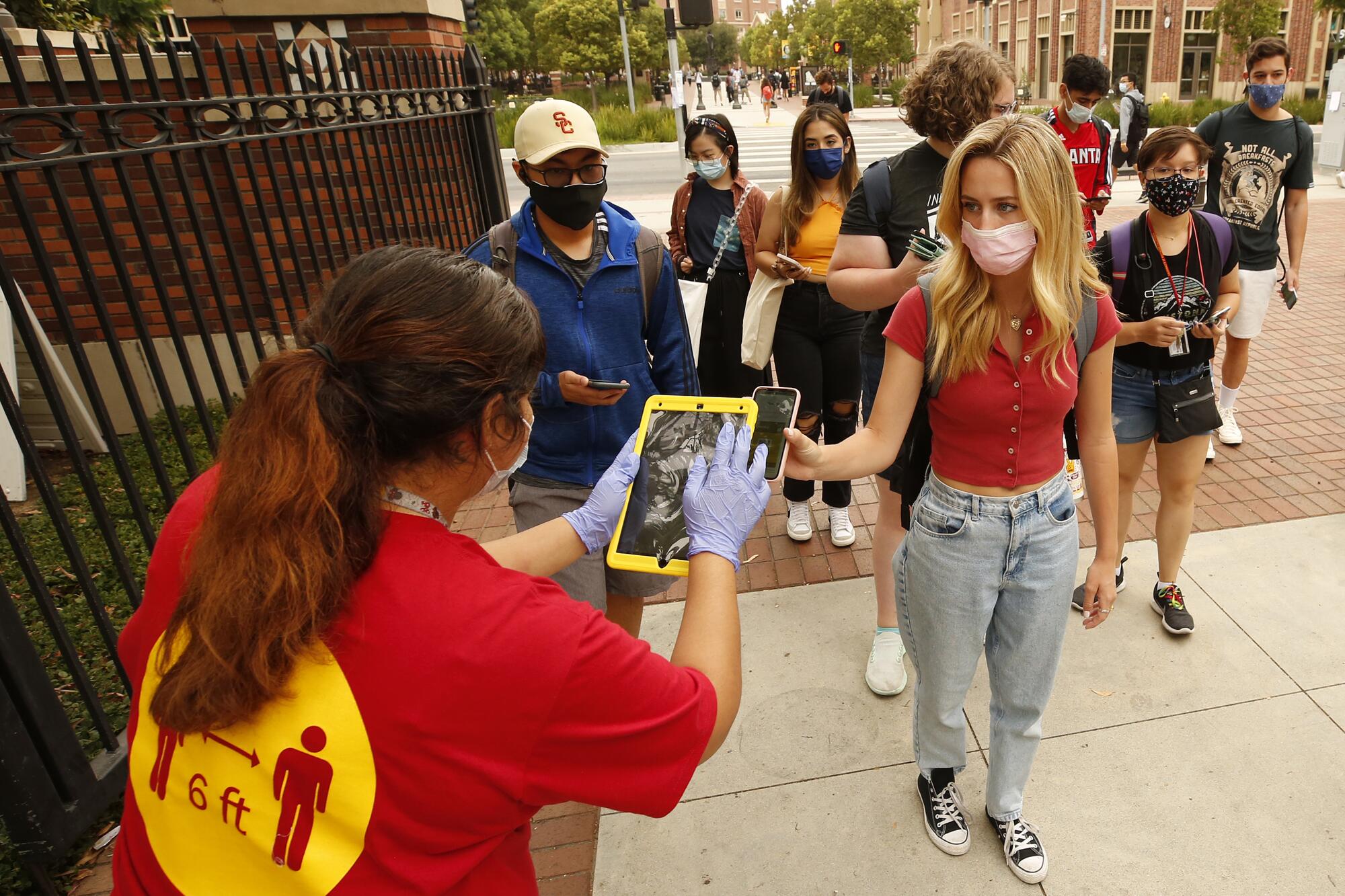
- Share via
Tens of thousands of students are converging in concentrated locations from all over the state, nation and even the world. They are moving into tight dorm rooms and setting up apartments with new roommates. They’re sitting in classrooms, eating cafeteria-style, socializing and studying in the library.
Many California college campuses appear to be havens from the coronavirus, with strict safety practices that include mandatory vaccinations for students and staff, weekly testing and required masking for all indoor and some outdoor activities. Positive cases will prompt quarantines and contact tracing.
But amid the surge of the highly contagious Delta variant, it’s unclear whether “almost back to normal” will last this fall, as students redefine the centerpiece of college life: togetherness.
“It’s a pain to get tested every week and wear a mask, but we need to do these things to mitigate the spread,” said Dr. Sarah Van Orman, chief health officer for USC Student Health. “The tension we’re feeling is the tension everyone is feeling of how much do we get back to normal and how much do we pull back?”

Three of Los Angeles County’s largest universities began in-person classes Monday: USC, Cal State Los Angeles and Cal State Long Beach. UCLA starts Sept. 23. Officials hope the strict safety protocols will be a strong enough shield against the campus outbreaks that threw universities into crisis mode a year ago — even with sparsely populated dorms and online classes.
These early weeks will be a test case for the new rules — some of the strictest in the country. USC was one of the first California universities to require vaccinations even before full federal approval, announcing the decision in June; the University of California and California State University followed in July.
At USC, the rules were visible Monday morning, as students, faculty and staff lined up at campus entry gates to flash a QR code on their cellphones showing that they had been vaccinated, tested negative for COVID-19, had completed a health and safety online training and had passed a daily “wellness check,” attesting to no fever, coughing or other symptoms. They wore masks in buildings, and most kept them on even when walking, biking and skateboarding through the leafy campus. Banners and signs reminded people to check symptoms and keep their masks on indoors.
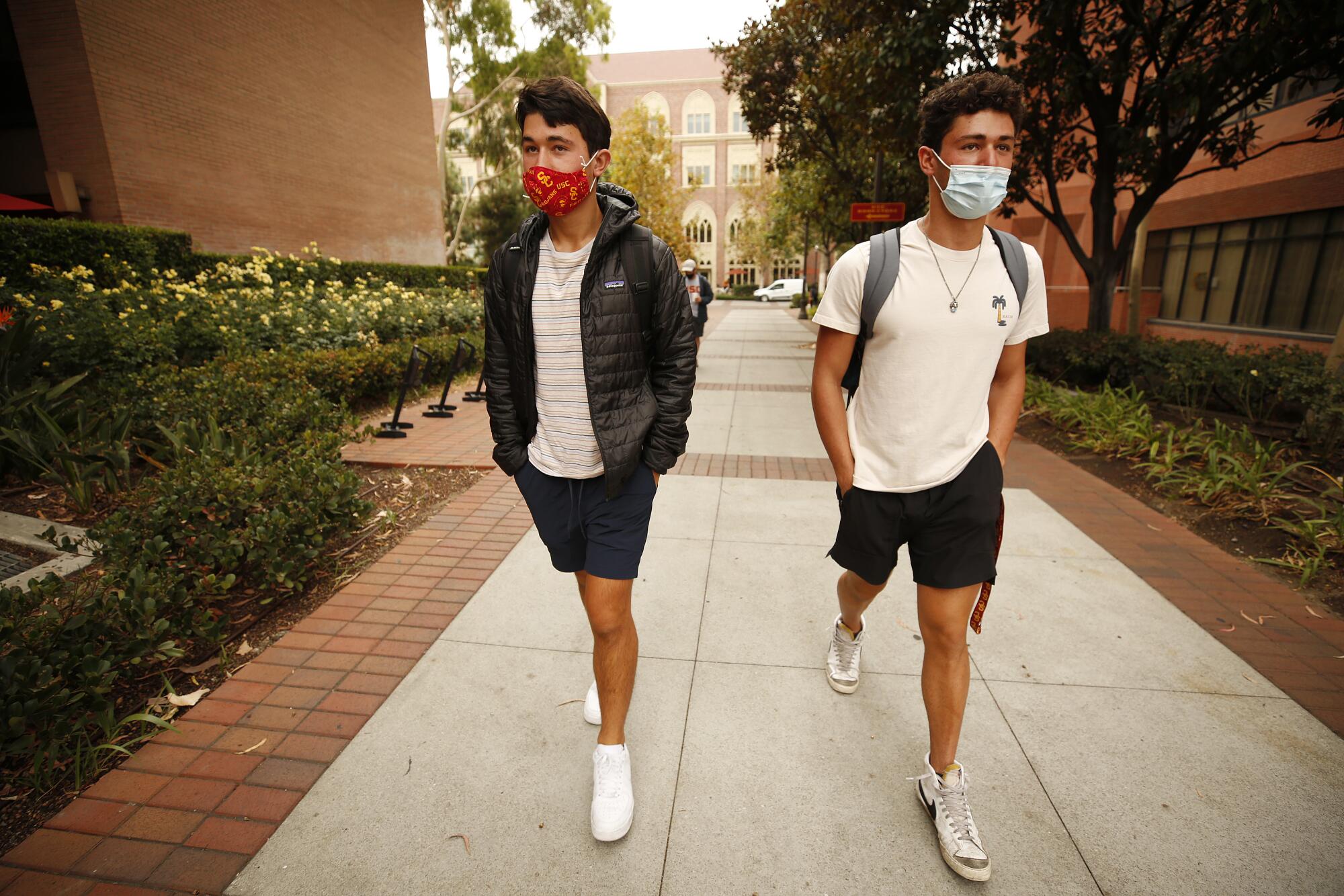
One downside for students: Visiting other dorms is not allowed. That bummed out Ryan and Evan Abdollahi, brothers a year apart who are starting their first in-person campus experience at the same time. Ryan, a sophomore, said he won’t be able to visit Evan, a freshman, and would need to meet study groups in the library. But he said the safety measures were worth it.
“I want to make sure I’m not putting anyone at risk,” Ryan said.
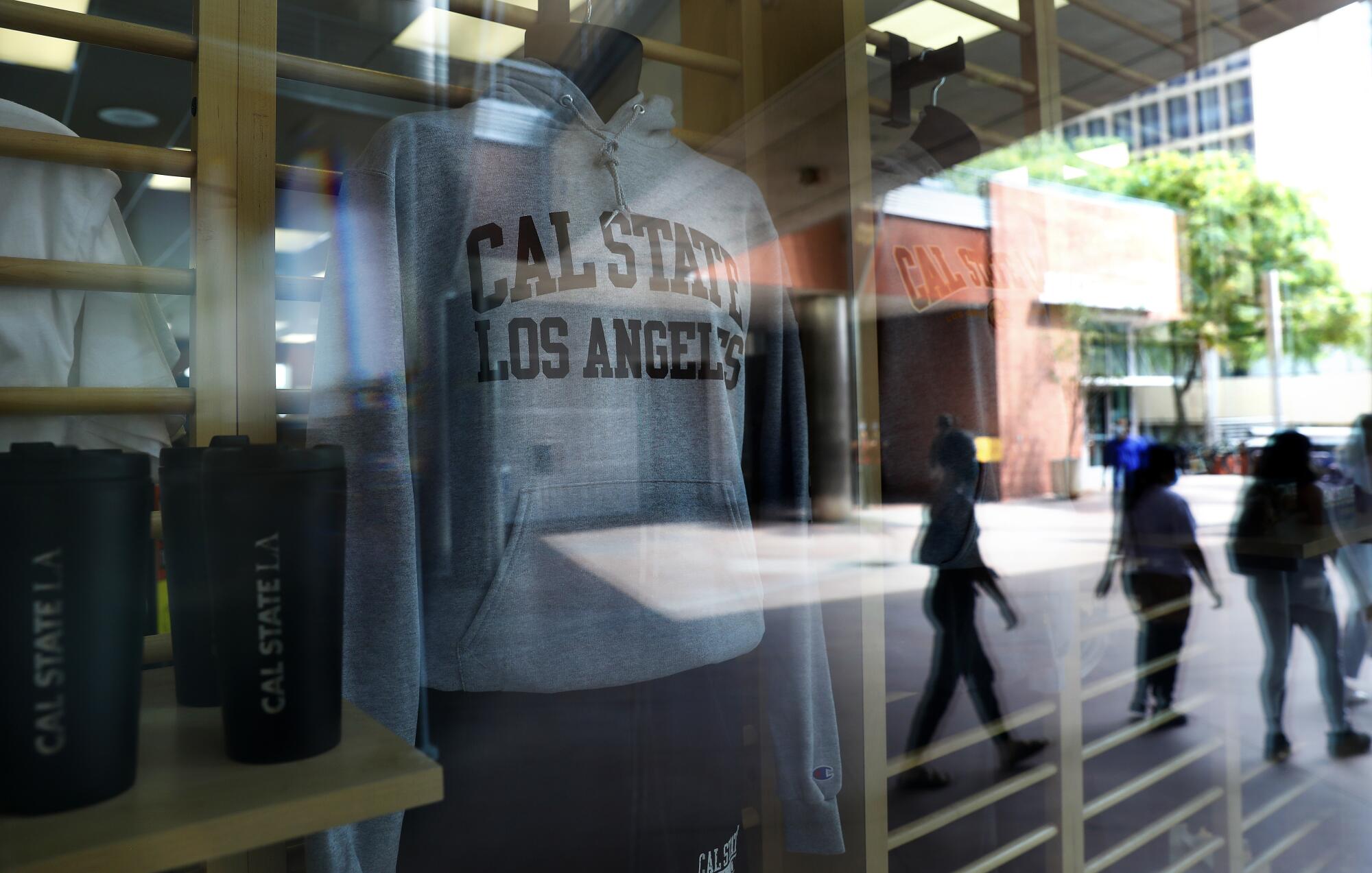
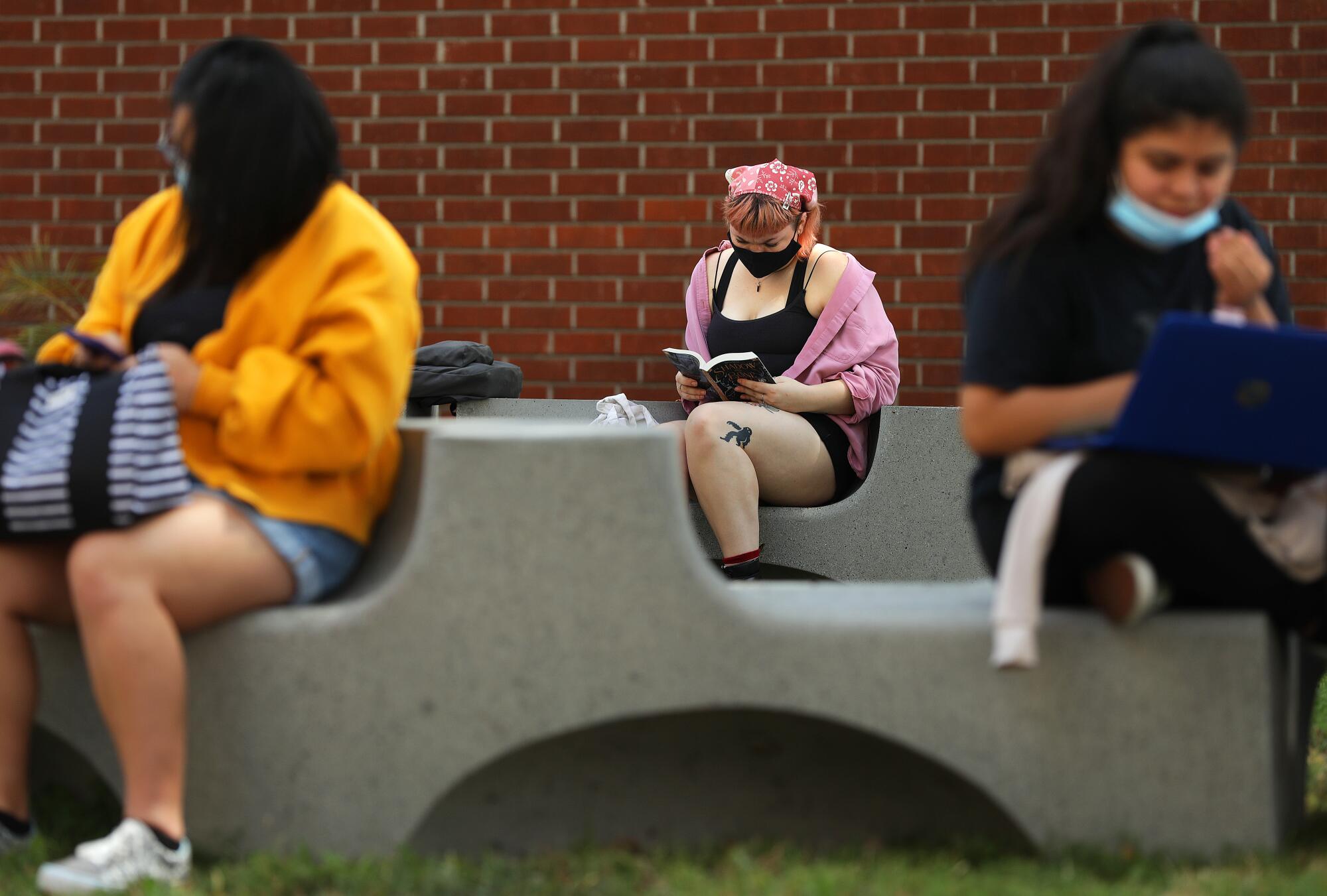
The scenes at some of Cal State’s largely commuter campuses were different Monday. At Cal State L.A., for example, vaccines are required, but students have until Sept. 30 to upload documentation to an online portal. There are no campus checkpoints for proof of vaccination or a negative COVID test result, and no mandatory weekly testing for fully vaccinated students.
Cal State campuses are undergoing a potentially permanent move to more online learning. Chancellor Joseph I. Castro previously told The Times that he recommended online classes for students wary of the vaccine, and several campuses are offering remote instruction for nearly half their courses, with Stanislaus State starting fully online in response to the Delta variant surge.
With more students online, fewer were on campus, diminishing opening-day buzz.
The new reality of pandemic schooling shaped the first day at Cal State L.A., where parents could head to orientation while students went for coronavirus testing. Faculty handed out bottles of hand sanitizer along with campus maps and free T-shirts.
Jasmine Cardena, 21, said the pandemic caused her to opt out of campus housing after learning she might have to room with as many as six others, even though they would be vaccinated. For now, she’ll live in a hotel during the week while she’s at school and will commute home to Riverside on weekends.
Except for the masks, the quieter campus scene looked nearly normal. Students sat outside with laptops; others chatted with friends or lined up at campus food spots for a snack or caffeine.
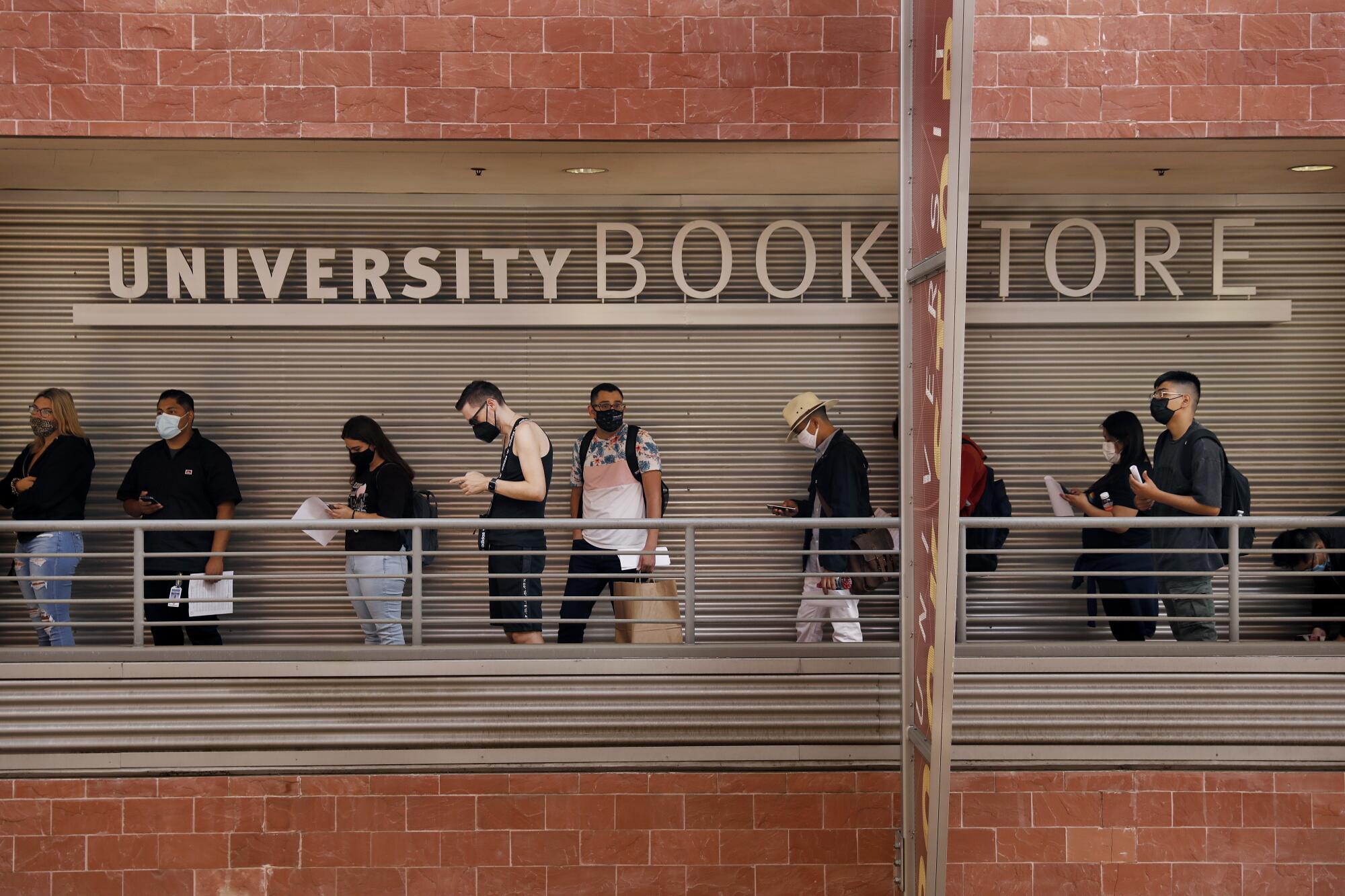
There were some first-day glitches. Angel Barrios, a Cal State L.A. senior, said she arrived on campus Monday morning for a film class, only to learn that the professor had decided to post the lecture online. “I could have slept in a little longer,” said Barrios, who commuted from Anaheim by train. But she was happy to be back — the last time she was on campus was the day before her son was born and a week before the school shut down.
At Cal State Long Beach, balloons and banners with “Welcome Home Beach Family” greeted students as they flocked back to campus. Jessica Gonzalez, 18, noticed that the campus was quieter than expected on her first day as a freshman but figured that was due to so many online classes.
Roughly 45% of classes are being held in person on campus this semester at Cal State Long Beach, about 50% at Cal State Northridge and Cal State L.A., more than 65% at Cal State Fullerton and 85% at San Diego State.
UCLA plans to offer 80% of courses in person and has begun gearing up for next month’s return with extra safety precautions. The campus has reinstated weekly testing regardless of vaccination status and has placed 500 more beds in reserve for quarantine use. UCLA, like UC San Diego and UC Berkeley, is testing wastewater from dorms for early detection of the coronavirus.
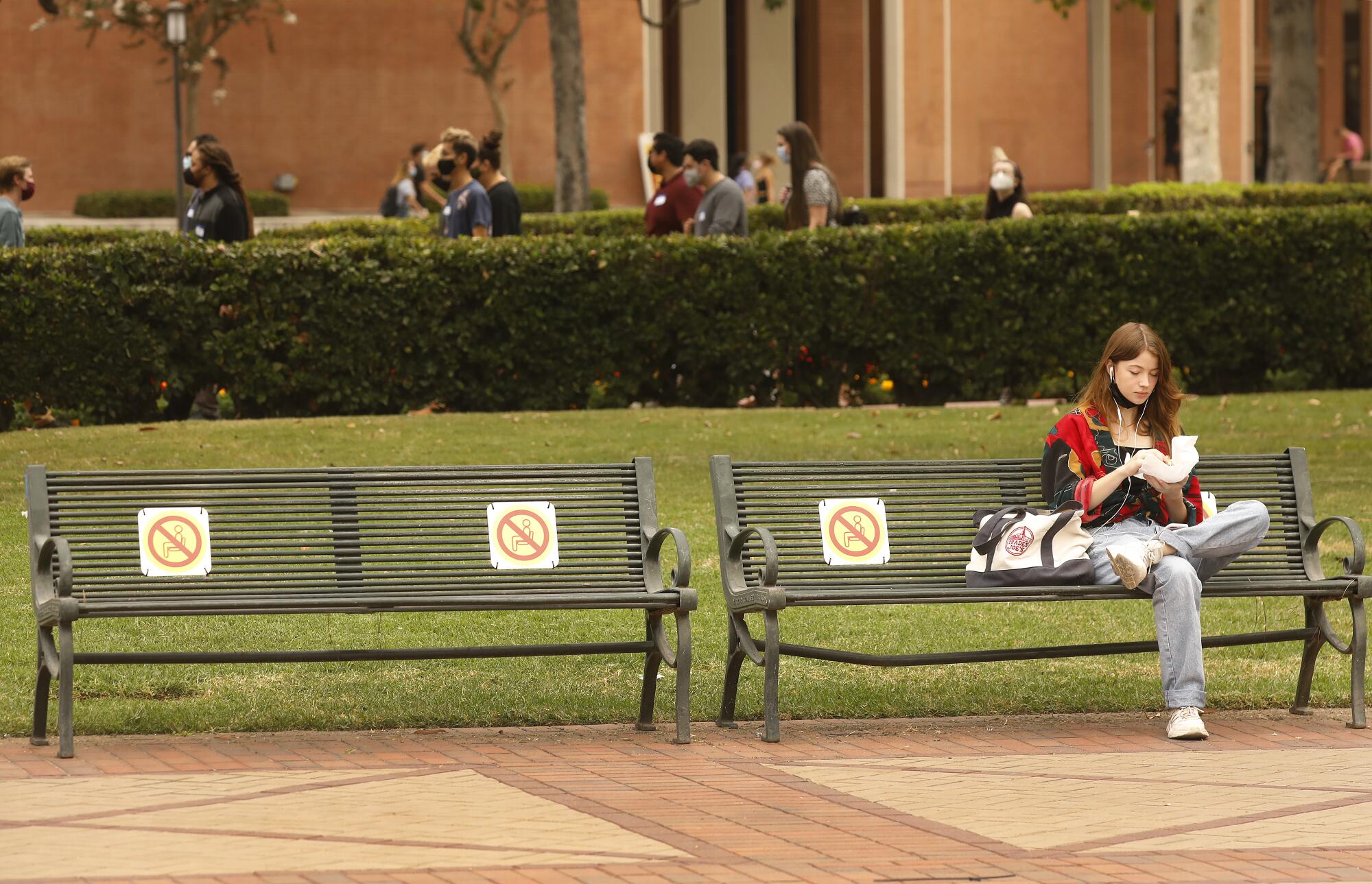
Unlike USC, which has fencing and gates that allow officials to limit campus access to those compliant with safety protocols, UCLA is open to several streets. But faculty and supervisors will use health data dashboards to check compliance of students and employees, according to Michael Beck, UCLA’s administrative vice chancellor.
Health experts at USC, UCLA and UC Berkeley all cautioned that COVID-19 cases are bound to surface as people congregate again. So far, however, weekly testing has yielded low positivity rates — less than 0.5% at USC and UC Berkeley, which starts classes Wednesday. USC detected 115 cases among nearly 27,000 students tested from Aug. 12 to Aug. 16, and Berkeley detected 36 cases among 8,000 undergraduates tested last week.
Guy Nicolette, assistant vice chancellor of UC Berkeley’s University Health Services, said he was relieved by those low numbers, because travel is the biggest risk for contracting the virus, and thousands of students moved in last week. He’s also encouraged by the 94% student vaccination rate.
“I’m cautiously optimistic, though not confident yet” of a semester without surges, he said.
Not everyone is sure the precautions will keep them safe. Khoa Nguyen, a USC sophomore, said he was “freaking out” standing in a crowd of students Monday waiting to get into his organic chemistry class. He said he was worried that he could get infected and fall behind in the notoriously difficult class if he had to spend 10 days in isolation, as required by campus rules.
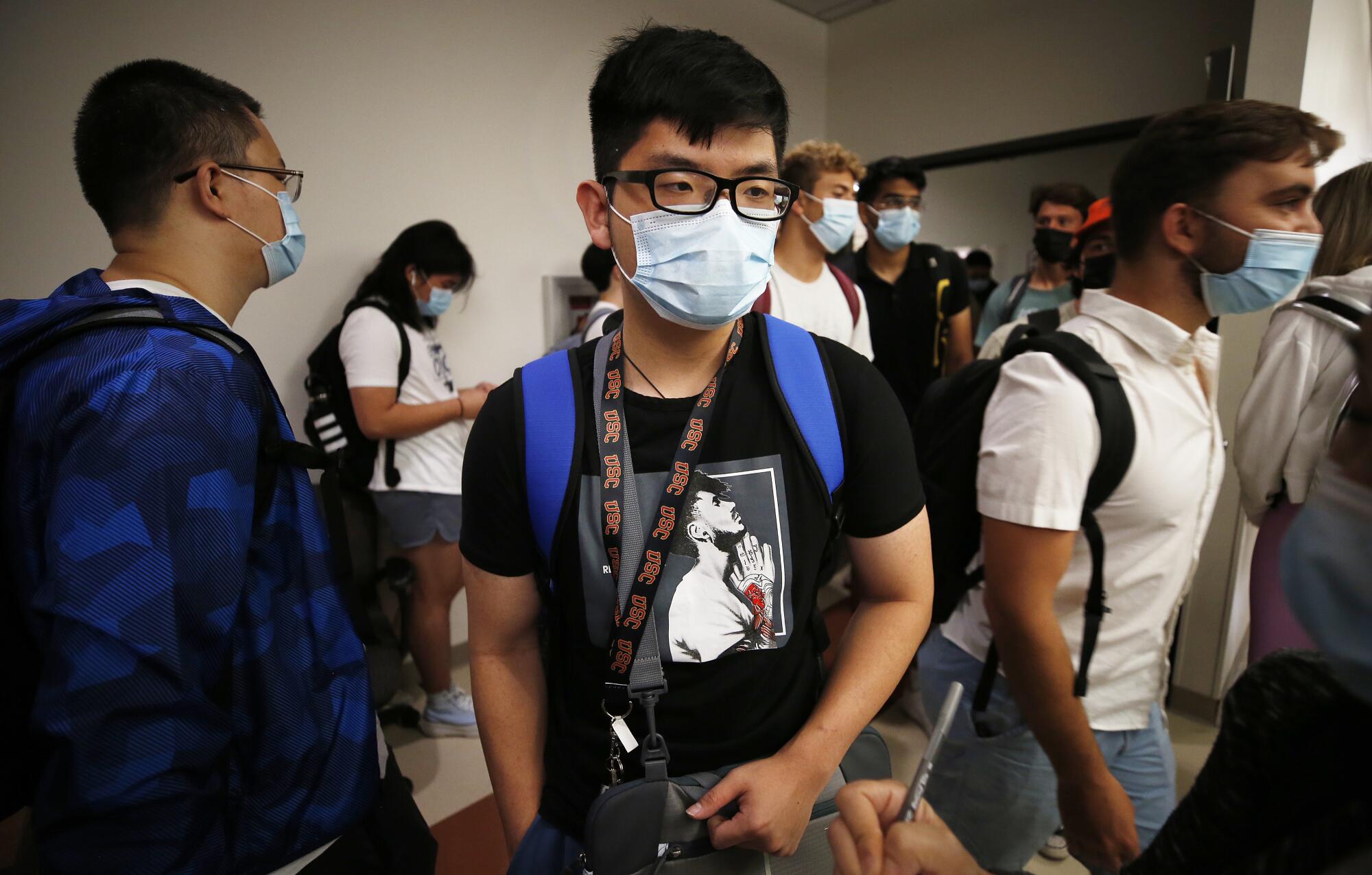
“If I do get quarantined, I feel I’m screwed,” he said.
A Twitter account by Concerned Staff of USC is urging the university to cancel big events, move large lectures online and allow employees to work some days at home — posting photos of unmasked people at last week’s large outdoor welcome events. Nearly 1,600 people have signed a petition calling for a hybrid model of online and in-person options for school and work.
Neelesh Tiruviluamala, a USC math professor, has created such a model with a classroom camera, his laptop and an iPad for students who may be uncomfortable coming to campus. On Monday, he gave a lecture to nearly 40 students in his classroom while engaging with a few via Zoom, checking to make sure they could hear him.
“This has not been a disaster so far,” he joked, as his students grinned through their masks.

Tiruviluamala said he didn’t realize how much he missed the “joy of being back” until he was. Over a year and a half of Zoom classes, he said, students gradually seemed less engaged and increasingly turned off their cameras.
“The energy of students is why we do this — seeing the ... passion and excitement,” he said.
Students voiced that same excitement about returning to campus.
“It feels like I’ll be able to actually learn,” said Jared Munoz, 18, a Cal State Long Beach sophomore majoring in mechanical engineering. “With online classes, even though you’re taught the material, it kind of feels like it goes in one ear and out the other.”
At USC, students were treated to a weeklong series of welcome events, including a movie night, disco and Sunday diversity fair that had a high-octane party vibe, as students line-danced to hip-hop classics, loaded up on tacos and Indian curries and visited recruitment tables for Black, LatinX, Asian American and LGBTQ campus clubs.
Emma Stellar, a freshman majoring in sociology, said students seemed so hungry for connection that they were knocking on dorm-room doors to find people for hangouts. In just one day, she and Nahuel D’Elias became fast friends and attended the diversity fair together, where they joined clubs — the LGBTQ group for Stellar and the LatinX Student Assembly for D’Elias.
“From being in isolation to this — it’s really overwhelming,” D’Elias said, gesturing to the hundreds of students who flocked to the fair. “But so much fun.”
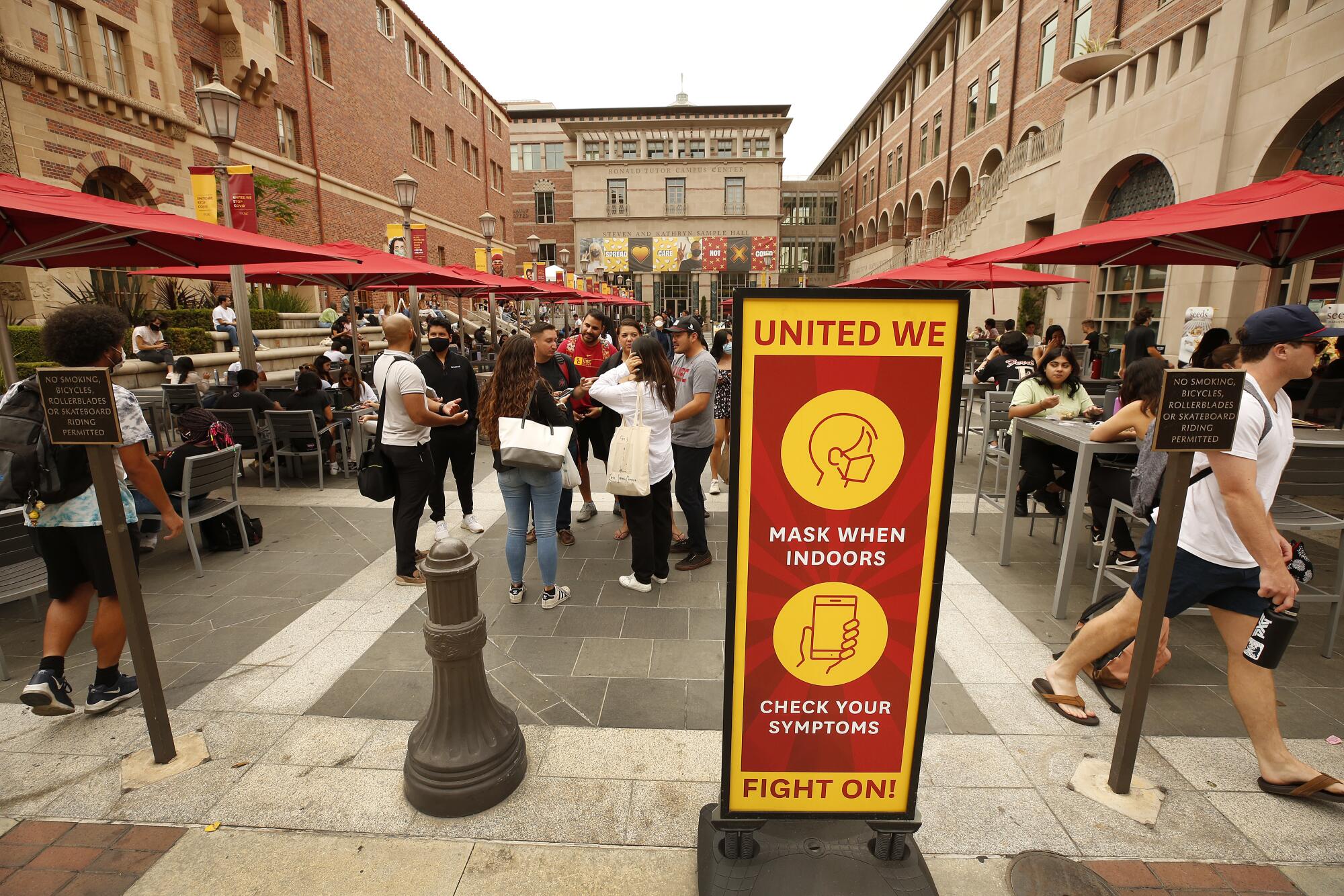
More to Read
Sign up for Essential California
The most important California stories and recommendations in your inbox every morning.
You may occasionally receive promotional content from the Los Angeles Times.
